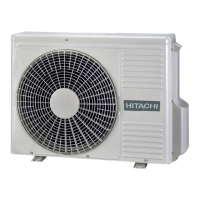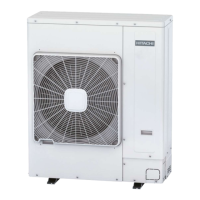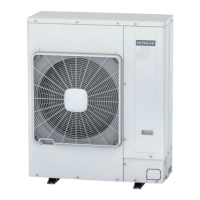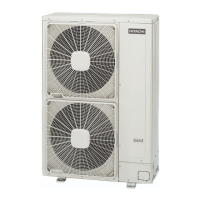3 Piping work and refrigerant charge
General notes before performing pipe work
SMGB0136 rev.0 - 07/2021
43
3
! CAUTION
• Cap the end of the pipe when pipe is to be inserted through a wall hole.
• Do not put pipes on the ground directly without a cap or vinyl tape at the end of the pipe.
• If piping installation is not completed until next day or over a longer period of time, braze off the ends of the piping and charge with
oxygen free nitrogen through a Schrader valve type access tting to prevent moisture and particle contamination.
• Do not use insulation material that contains NH3, as it can damage copper pipe material and become a source of future leakage.
• Insulate the unions and are-nuts at the piping connection part completely.
• Completely insulate both refrigerant gas and liquid piping between the indoor unit and the outdoor unit to avoid a decrease of perfor-
mance; if not, dew will occur on the piping surface.
• Refrigerant circuit and Water circuit must be performed and inspected by a licensed technician and must comply with all relevant
European and national regulations.
Insulation
Attach the pipe insulation to each branch using vinyl tape. Attach also insulation to eld supplied pipes in order to prevent
the capacity decrease according to the ambient air conditions and dewing on the low pressure pipe surface.
1. Cap.
2. Field supplied insulation.
3. Do not make a gap.
? NOTE
When polyethylene foam is applied, it is recommended the usage of a
wall thickness of 10 mm for the liquid piping and 15 mm to 20 m for the
gas piping.
1
2
1
3
! CAUTION
• Perform the insulation work after the pipe surface temperature decreases to the room temperature, if not the insulation material may
melt.
• If the ends of the piping system are open after ending the piping work, attach caps or vinyl bags securely to the ends of the piping,
avoiding moisture and dust entering.

